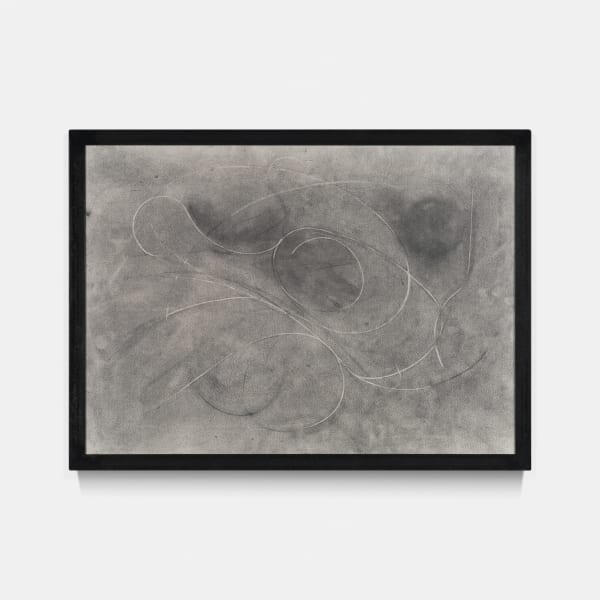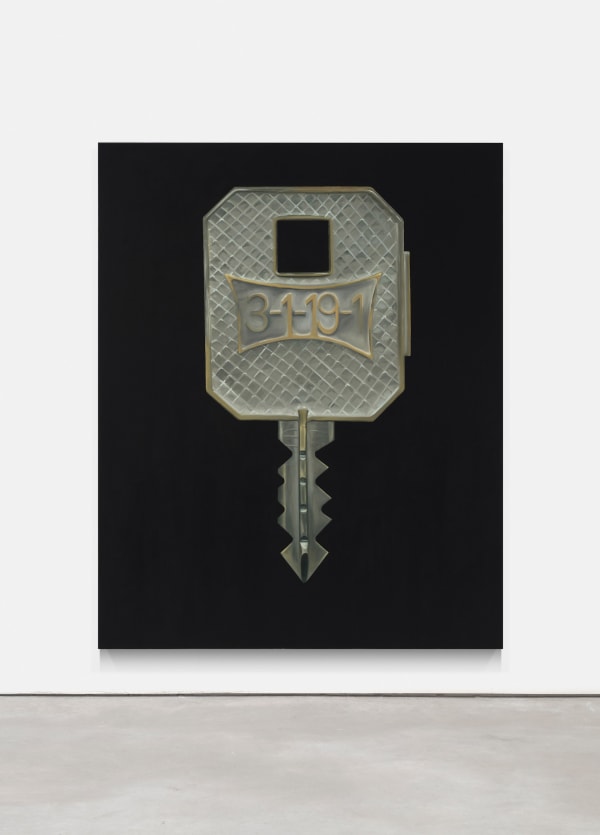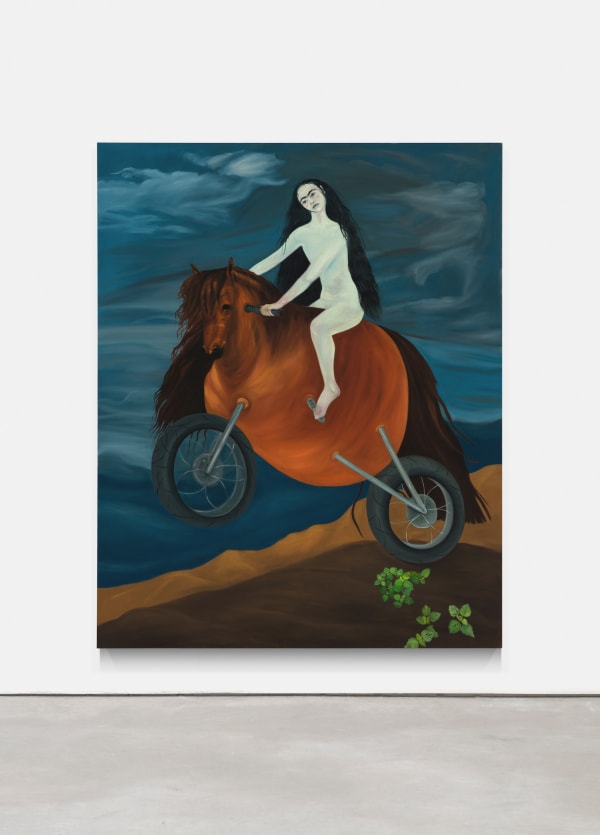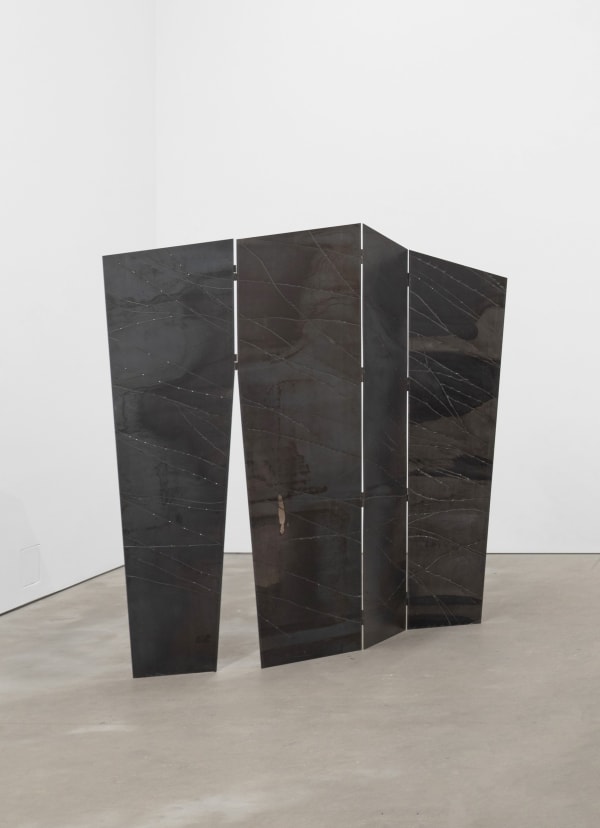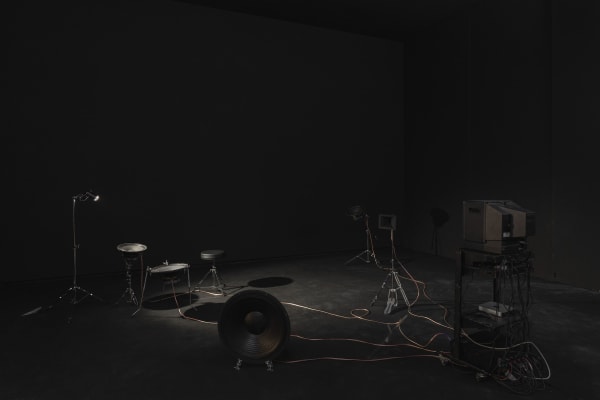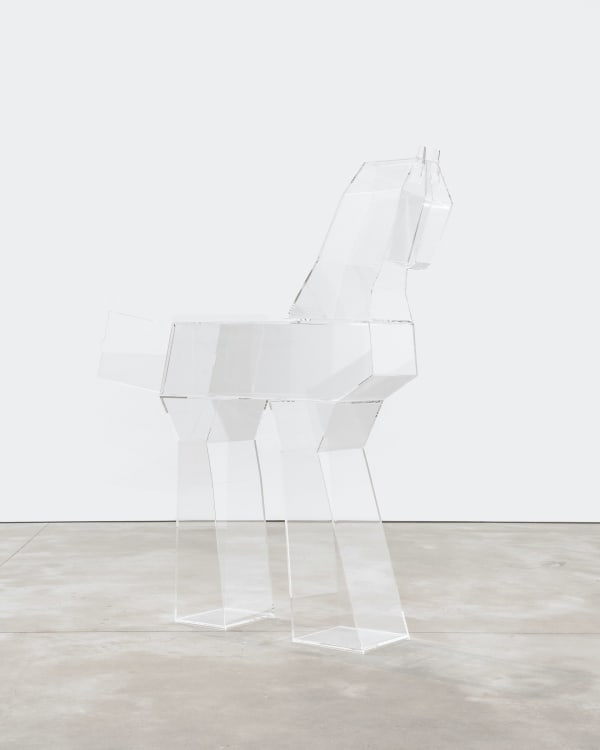Holbein Syndrome: Joana Coelho, Inês Mendes Leal, Maria Máximo, Inês Raposo, curated by Francisca Portugal
Only art survives everything, in the shadow or in gradations of decay, with the shades and tones of civilization, which disappears and is continually outdated. Science cries for the moon. Art pretends to cry for the moon.¹
It is not uncommon in Art History to find artistic decisions that immortalize the gesture of the creator, often transcending the original context of the work. In 1533, Hans Holbein (1497/8–1543) completed the famous painting The Ambassadors, a work that still intrigues its audience today. Holbein subverts the classical rules of painting by introducing, into a composition that exalts knowledge and science in a sober and academic universe, an unusual symbol that disturbs it. The vanitas, occupying a large area of the lower part of the canvas, evokes the ephemerality of life and the inevitability of death, and instigates a premonition—a reminder of the transience of reality, even for those who master earthly knowledge, as is the case with the portrayed subjects.
Not being the main focus of the painting, this skull has become a milestone in Art History due to its strangeness and ingenuity. In fact, despite the area it occupies on the surface, the skull is only revealed from a certain angle, through its anamorphosis and the use of rigorous perspective rules, showcasing Holbein's virtuosity. By elevating his mastery through the work to a level above that of the models, the artist places himself in a remarkable intellectual and scientific context. After all, this portrait is the only material memory left of these men, and the most relevant aspect of this record turned out not to be the original pretext for its commission. This irony, combined with the manipulation of visual elements, gives this painting an additional meaning: a provocation of the rules of representation, a challenge to the reading of History as memory, and the possible dissimulations of truth.
The question arises: why cannot Holbein's skull be the most absolute point of reality, and everything else an attempt at approximation?
This set of symptoms defines a certain condition that Holbein's legacy provokes in the artists Inês Mendes Leal, Inês Raposo, Joana Coelho, and Maria Máximo. Their works are characterized by a sense of emancipation, empowerment, and cynicism, in a constant questioning of the nature of life and an absolute belief that art expresses nothing beyond itself. This condition interrogates the vocabulary and codes of nature, viewing them as mere imitations of art.² Holbein Syndrome is the product of the artists' free will and their ability to capture intentions, desires, and intangible places, which come closer to facts than the facts themselves. Creative freedom, superior to science, history, and philosophy, interrogates the limits of illusion and falsehood, using perceptions and tricks of vocabulary and challenging the laws of the universe with such clarity that it confounds representations of reality.
¹ Free translation, Erewhon, Samuel Butler
² The Decay of Lying, Oscar Wilde
-
 Joana CoelhoCirce's Hex, 2025Graphite on 300g cream paper, with steel frame73 x 52 cm
Joana CoelhoCirce's Hex, 2025Graphite on 300g cream paper, with steel frame73 x 52 cm -
 Joana CoelhoDance of the nine opals, 2025Graphite on 300g cream paper, with steel frame73 x 52 cm
Joana CoelhoDance of the nine opals, 2025Graphite on 300g cream paper, with steel frame73 x 52 cm -
 Inês RaposoBackdoor key, 2025Oil on canvas200 x 160 cm
Inês RaposoBackdoor key, 2025Oil on canvas200 x 160 cm -
 Inês RaposoDriving a pony after Velásquez, 2025Oil on canvas200 x 160 cm
Inês RaposoDriving a pony after Velásquez, 2025Oil on canvas200 x 160 cm -
 Joana CoelhoTreatise II, 2025Steel223 x 169 cm
Joana CoelhoTreatise II, 2025Steel223 x 169 cm -
 Joana CoelhoTreatise I, 2025Steel120 x 125 cm
Joana CoelhoTreatise I, 2025Steel120 x 125 cm -
 Joana CoelhoTreatise III, 2025Steel175 x 435 cm
Joana CoelhoTreatise III, 2025Steel175 x 435 cm -
 Inês Mendes LealForecast, 2024Pentaphonic installation, drum hardware, screen, high-frequency loudspeaker, mid-frequency loudspeaker and subwoofer
Inês Mendes LealForecast, 2024Pentaphonic installation, drum hardware, screen, high-frequency loudspeaker, mid-frequency loudspeaker and subwoofer
Staff text played on drums by Vicente MateusVariable dimensions
Sound 20'00''
Video 20'00'' -
 Maria MáximoLicking the Tyranny, 2025Print on vinyl sticker158 x 223 cmEdition of 2 plus 1 artist's proof
Maria MáximoLicking the Tyranny, 2025Print on vinyl sticker158 x 223 cmEdition of 2 plus 1 artist's proof -
 Inês RaposoParede de madeira, 2024Oil on canvas200 x 150 cm
Inês RaposoParede de madeira, 2024Oil on canvas200 x 150 cm -
 Maria MáximoAmmit's Fugitive, 2024Crystal acrylic190 x 118 x 35 cm
Maria MáximoAmmit's Fugitive, 2024Crystal acrylic190 x 118 x 35 cm




